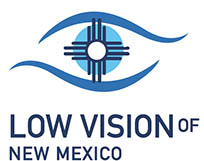 Glaucoma is a dangerous eye condition that can cause blindness. The condition occurs when fluids in the eye put pressure on the optic nerve. It is a leading cause of blindness worldwide, with more than 3 million cases in North America alone.
Glaucoma is a dangerous eye condition that can cause blindness. The condition occurs when fluids in the eye put pressure on the optic nerve. It is a leading cause of blindness worldwide, with more than 3 million cases in North America alone.
By testing your vision, dilating your pupils, examining your eyes, and testing your eye pressure, Dr. Dulce Walker can detect whether you have glaucoma. Additional tests can determine whether your peripheral vision has declined.
Because glaucoma’s early stages affect the peripheral nerves in your retina, your side vision is damaged before your central vision. Furthermore, as this nerve damage is almost always pain-free, often this condition is discovered only after causing irreversible vision loss. While glaucoma’s effects can be managed, its damage is permanent.
Be Aware of the Risk Factors
You should be alert to the dangers of glaucoma, especially if you:
- are over 40 years old
- are African American or Hispanic
- have diabetes, heart disease, sickle cell anemia, or high blood pressure
- have a family history of glaucoma
- sustained an eye injury
- have extreme nearsightedness or farsightedness
- have used corticosteroid medications
- notice any vision loss
How Do I Know if I Have Glaucoma?
Contact Dr. Dulce Walker at Low Vision of New Mexico, who will dilate the pupil of your eyes and perform a comprehensive eye examination to determine whether you have the condition. If you do, we will start treatment immediately, usually by prescribing eye medications to prevent the glaucoma from worsening, and schedule follow-up visits.
The Centers for Disease Control and Prevention recommends getting a thorough dilated eye exam by age 40 to catch glaucoma and other eye diseases early.
Other proactive steps the CDC advises to prevent glaucoma include:
- maintaining a healthy weight
- monitoring your blood pressure
- staying active
- not smoking
Low Vision of New Mexico treats patients with glaucoma — and people at risk for it — in Albuquerque, Santa Fe, Las Cruces, Los Alamos, and throughout New Mexico.
References
- https://www.aoa.org/patients-and-public/eye-and-vision-problems/glossary-of-eye-and-vision-conditions/glaucoma#:~:text=Certain%20features%20of%20eye%20anatomy,inflammations%20may%20also%20trigger%20glaucoma.
- https://www.mayoclinic.org/diseases-conditions/glaucoma/symptoms-causes/syc-20372839#:~:text=Glaucoma%20is%20a%20group%20of,over%20the%20age%20of%2060.
- https://www.glaucoma.org/glaucoma/are-you-at-risk-for-glaucoma.php
- https://www.glaucoma.org/glaucoma/glaucoma-risk-increases-in-families-spread-the-word.php)
